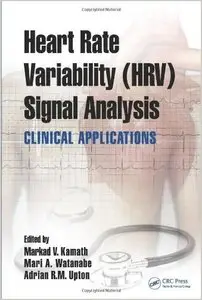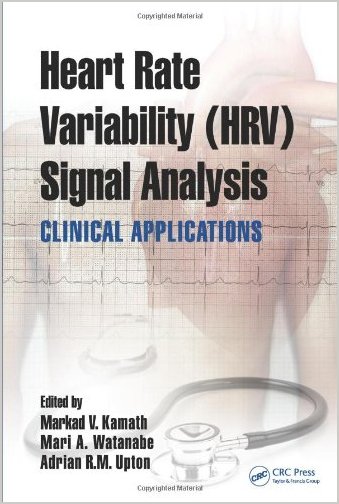Heart Rate Variability (HRV) Signal Analysis: Clinical Applications by Markad V. Kamath, Mari Watanabe and Adrian Upton
English | 2012 | ISBN: 1439849803 | 532 pages | PDF | 20,2 MB
English | 2012 | ISBN: 1439849803 | 532 pages | PDF | 20,2 MB
Open a Window into the Autonomic Nervous System
Quantifying the amount of autonomic nervous system activity in an individual patient can be extremely important, because it provides a gauge of disease severity in a large number of diseases.
Heart rate variability (HRV) calculated from both short-term and longer-term electrocardiograms is an ideal window into such autonomic activity for two reasons: one, heart rate is sensitive to autonomic activity in the entire body, and two, recording electrocardiograms is inexpensive and non-invasive unlike other techniques currently available for autonomic assessment, such as microneurography and metaiodobenzylguanidine (MIBG) scanning. Heart Rate Variability (HRV) Signal Analysis: Clinical Applications provides a comprehensive review of three major aspects of HRV: mechanism, technique, and clinical applications.
Learn Techniques for HRV Signal Analysis
Edited by an engineer, a cardiologist, and a neurologist, and featuring contributions by widely published international researchers, this interdisciplinary book begins by reviewing the many signal processing techniques developed to extract autonomic activity information embedded in heart-rate records. The classical time and frequency domain measures, baroreceptor sensitivity, and newer non-linear measures of HRV are described with a fair amount of mathematical detail with the biomedical engineer and mathematically oriented physician in mind. The book also covers two recent HRV methods, heart-rate turbulence and phase-rectified signal averaging.
Use of HRV in Clinical Care
The large clinical section is a must-read for clinicians and engineers wishing to get an insight into how HRV is applied in medicine. Nineteen chapters altogether are devoted to uses of HRV in:
• Monitoring—for example to predict potential complications in pregnancies, fetal distress, and in neonatal critical care
• Acute care—for gauging the depth of anesthesia during surgery and predicting change in patient status in the intensive care unit
• Chronic disorders—for assessing the severity of congestive heart failure, stroke, Parkinson’s disease, and depression
Bringing together the latest research, this comprehensive reference demonstrates the utility and potential of HRV signal analysis in both the clinic and physiology laboratory.



